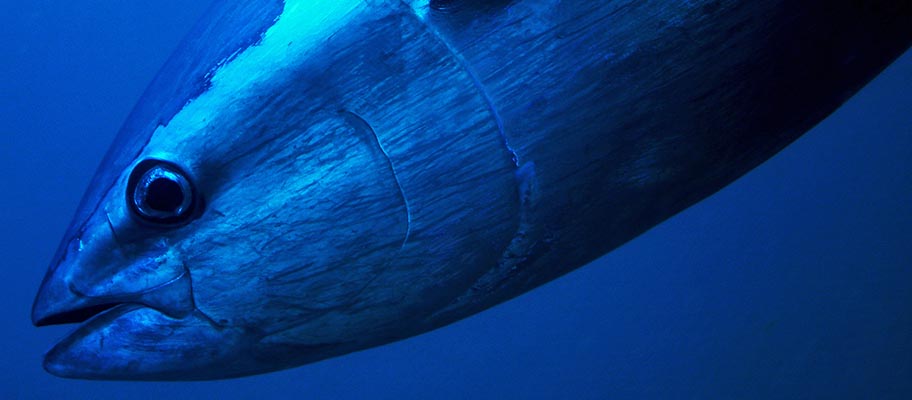Commercial tuna fishing is rapidly shifting towards sustainable fishing according to data which shows almost 30% of the world’s tuna catch by volume is now certified to the MSC’s Standard for sustainable fishing – just 14% of the world tuna catch by volume was certified in 2014.

© Shutterstock/Alexius Sutandio
This rise comes on the back of the UN’s report on the State of World Fisheries and Aquaculture released last year, which highlighted that concerted efforts to end overfishing of tuna had resulted in eight stocks being rebuilt to a healthy level. This had taken five years to achieve, between 2014 and 2019, reducing the number of major tuna stocks experiencing overfishing from 13 to five.
The latest update to the status report from the International Seafood Sustainability Foundation indicates that, globally, 65% of the stocks are at a healthy level of abundance.
Changes on the water are being driven by increasing retailer and consumer demand. Some of the biggest global brands making strong commitments to source tuna caught by MSC-certified fisheries in the last 12 months include Edeka, Netto, Walmart, Bumble Bee, StarKist, and Lidl.
Data recorded by the MSC shows sales of its labeled tuna products, which contain tuna caught in MSC certified fisheries, rose by almost a third reaching 70,000 tons in 2019-20 and is projected to reach 100,000 tons in 2020-21, with the biggest growth in the American market (+83%) followed by Europe (+52%).
“The growth of MSC certified tuna reflects the achievements of the fisheries committing to sustainability, and businesses in the sustainable seafood supply chain are recognizing and rewarding these fisheries,” said Nicolas Guichoux, the Marine Stewardship Council’s Chief Program Officer.
Overall, more than half of global tuna catch is now either certified as sustainable or working towards that goal:
- Almost 30% of the global catch is now MSC certified.
- More than 20% of the global tuna catch by volume is being independently audited against the MSC Fishery Standard.
- Nearly 20% of global tuna catch is taken by fisheries in a fisheries improvement project (FIP), an initiative that puts fisheries on a path towards sustainability.
However, major challenges remain.
The latest industry estimates suggest 22% of tuna stocks are experiencing overfishing and 13% are overfished. ISSF data indicates Atlantic Ocean bigeye, Indian Ocean yellowfin, and Pacific bluefin tuna stocks continue to be overfished and are subject to overfishing; Indian Ocean albacore and bigeye continue to be subject to overfishing; however, all skipjack stocks remain healthy.
For tuna populations to thrive, fisheries need robust management, effective enforcement, and reductions in catching unwanted or endangered species or bycatch. Consequently, it can take years of improvements and reforms for fisheries to be independently assessed and achieve MSC certification.
One example, highlighted in the MSC’s Sustainable Tuna Handbook, is the Cook Islands longline fishery, which first embarked on a Fishery Improvement Project in July 2013. It initially scored below sustainable levels in several areas, including its impact on tuna stocks and other species.
But the fishery worked hard to assess the health of the tuna stocks, develop practices to prevent impacts on Endangered Threatened and Protected (ETP) species, and implemented data collection programs for non-target species. As a result, it achieved MSC certification in 2015 and was re-certified in 2020.
In addition to the hard work they need to put in to meet the MSC Standard, certified tuna fisheries have to continue improving to meet best practices or to address any conditions that are attached to the certification. Between 2007, when the first tuna fishery achieved MSC certification, and March 2021, 49 conditions of certification have been met by tuna fisheries, specifically:
- 8 on stock health
- 19 on fishery management
- 22 on further reducing a fishery’s impact on the ecosystem.
Fisheries such as the Fiji Albacore and yellowfin tuna fishery have introduced a number of measures to reduce bycatch. The fishery that uses the longline method to catch tuna switched from wire—which can accidentally entrap sharks—to monofilament traces which sharks can bite through. The fishery also fishes in deeper waters to avoid sharks. It has also increased transparency and accountability, such as through using electronic monitoring systems and installing onboard cameras on more than 50 of its boats.
The MSC recently granted awards via its Ocean Stewardship Fund that will benefit tuna fisheries long term, including about $70,000 USD awarded to Tuna Australia and Australian Eastern Tuna and Billfish Fishery. The fishery was recertified in August 2020 and will use the funds to investigate potential sources of sustainable bait. This will help understand how factors including price, availability, target species, and characteristics influence the choice of bait. Once alternate sources of bait have been identified, they will be tested on real fishing trips to check how effective they are.
The implications of this improvement are far-reaching. Effective management of tuna fisheries is not only helping stocks and ecosystems to recover, but also support fishing communities and local economies. The global tuna market is worth more than $42 billion USD a year and more than 6 million people are employed within the tuna industry in the Asia-Pacific region alone.
